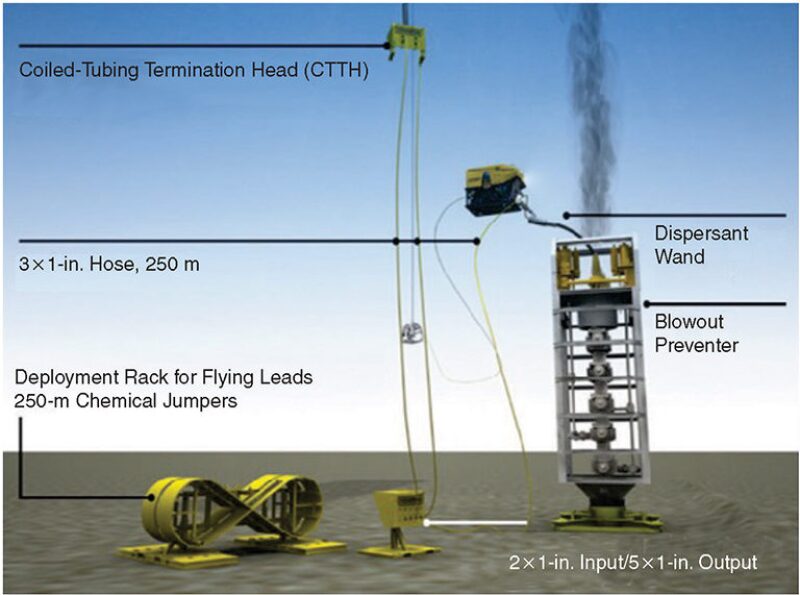To test the improved blowout-response capabilities implemented following the Deepwater Horizon accident, Total organized and ran a large exercise to check the ability to efficiently define, implement, and manage the response to a major oil spill resulting from a subsea blowout, including the mobilization of a new subsea-dispersant-injection (SSDI) device. After a year and a half of preparation, the exercise took place 13–15 November 2013.
Introduction
The oil-spill-response exercise, code-named LULA, considered a scenario in which a blowout at a water depth of 1,000 ft resulted in an uncontrolled release at 50,000 BOPD. The main objectives of the LULA exercise were
- To mobilize all the emergency and crisis units in Luanda, Angola; offshore; and in Paris
- To use all the techniques and technologies available to track an oil slick
- To mobilize the SSDI kit from Norway to Angola and to deploy it close to the well
- To deploy all the available oil-spill-response equipment of Total E&P Angola
- To test the procurement of dispersant and the associated logistics
- To test the onshore response, including coastal protection, onshore cleanup, oiled-wildlife management, and waste management
Subsea Response
During the Deepwater Horizon disaster, the injection of dispersant directly at the source of the oil leakage at seafloor level proved to be an effective technique. The technique required the deployment of an SSDI system.
After the Deepwater Horizon accident, Total was involved with a group of nine major oil and gas companies in the Subsea Well Response Project. As a result of the work of this group, two SSDI kits were manufactured and positioned in Stavanger.


